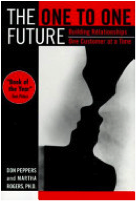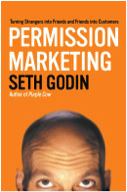The Power of Permission: a Practical View

On the surface we live in an ever more transparent culture, where nothing is private anymore, and almost every detail of daily life and what's on your mind, can be shared on Facebook, Twitter etc.
To paraphrase Roy & HG "too much sharing is not enough".
But in a contradictory, opposite trend for marketers and researchers, it's becoming more and more difficult to reach people, to promote your offering and gather feedback.
The #1 essential for interaction with your listeners in this firewall culture is The Power of Permission!
A radio brand can no longer function without "Permission".
A hot TVC is not enough now to build an audience on its own (as if it ever could realistically!), and you can't cost-effectively do random household surveys to answer timely questions on brand images or content at a moment's notice.

People build their own private firewalls to keep out unwanted marketing messages, and long, boring, repetitive survey questionnaires. And why do recorded TV and content-on-demand technologies exist, if not to avoid ad breaks, as well as fitting with leisure time convenience?
The Power of Permission philosophy.
Is not new, but has evolved from an intriguing alternative, to the only way to survive.
An influential milestone was the 1993 book One To One Future: Building Relationships One Customer at a Time by Don Peppers & Martha Rogers. Written well before social media, when mainstream web interaction was still emerging, I loved it at the time, and it still reads very well today! It's only the quaint technologies, not the fundamental principles, that have changed.
Being all about "share of customer" not "share of market". Engaging in dialogue, and collaborating with customers, especially those who have the most potential and influence. As I discussed in my Radio Today Mythbuster #2 article here.
Then came Seth Godin of Purple Cow fame, who produces many stimulating, easy-to-digest books on contemporary marketing, and his 1999 Permission Marketing: Turning Strangers Into Friends And Friends Into Customers.
Now it's a flood.
As all parts of the marketing ecosystem, from promotion to research, are probing for ways through the firewall. And a new business language of social media analytics and customer relationship management has become mainstream.
But what to make of it all?
When social media and digital marketing theory endlessly revolves around how many angels dancing on a pinhead constitute a following, and do Likes become customers etc ?
My suggestion for a radio brand, when time and resources are at a premium, and abstract theorising a distraction, is to go back to One-To-One basics.
A great example is the 90s radio staple, the At-Work Network. When well executed, this was a very effective tool for building heavy-listener loyalty with nothing more than a database, faxes (!), on-air content and cross-promotion. With tight management by the best Promotions people, and regular, creative activity and interaction, it was also a premium client opportunity, for what's now called integration.

There are practical things you can do – starting today!
To ask Permission and contact details, and start building the relationship, every single listener interaction should be captured.
Whether a Facebook fan, Twitter follower, competition winner, street vehicle contact, regular show caller, and so on.
Two Permissions To Ask For…
1. To receive regular communications about upcoming events, program features, and competitions
2. To receive invitations for occasional research surveys, or Listener Advisory Board participation
The first is standard. The second research option much less common, but just as important. You may not get permission for both, so allow the option of one or other only.
Even if you're not running an online music panel (when this solicitation should be a given), you need to know who wants to give you regular feedback. And many listeners do – they just need to be asked.
How to implement different types of Permission Research is another topic, but if you don't have the contacts, you have nothing to start with. Otherwise your costs of finding a research sample to quickly address topical issues, escalate to the point where CFO-Permission is a non-starter.

Team Effort & Planning
It should be clear by now, this requires co-ordination through the entire product team. Building a Permission Database, even a simple one in Excel, takes initial planning, and constant maintenance : once you start, you never finish – no turning back or pause button. But the rewards and ROI are great.
And handled carefully to avoid over-commercialisation, there's client integration potential to fund the activity. And even provide short, simple research questions for clients, enhancing that relationship.
Just be careful with Privacy & Data Protection compliance, and not burning the database through over-use. Otherwise Permission will evaporate with the morning dew.

The Power of Permission … as Sam Kekovich says "you know it makes sense!"
Eriks Celmins is Managing Director of Third Wave Media and InsiderFocus, consultant for research, strategy and content. Find out more here.





